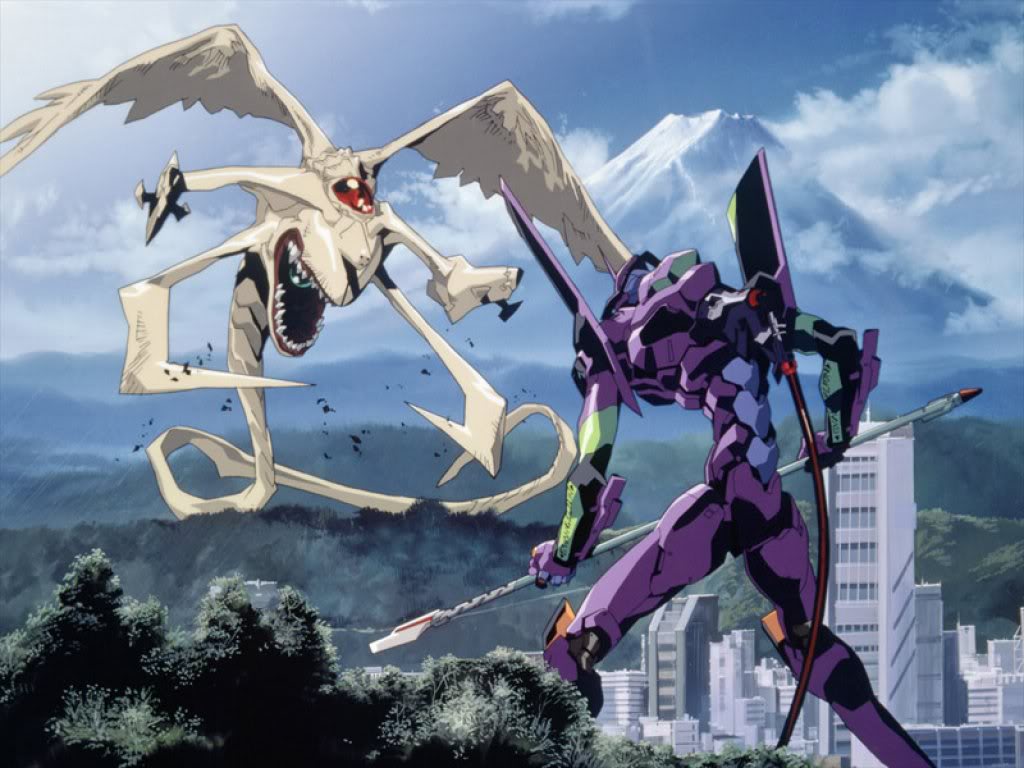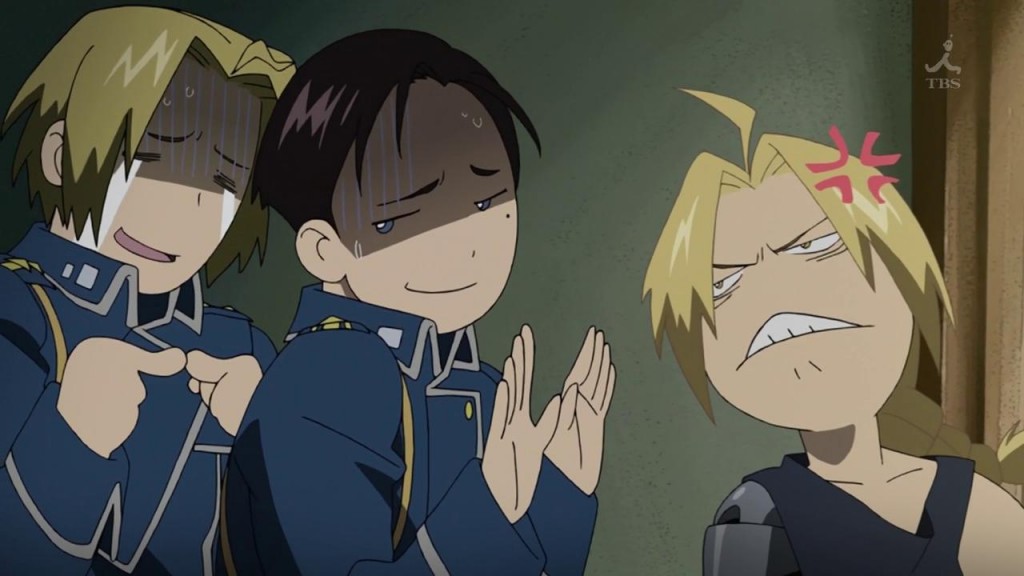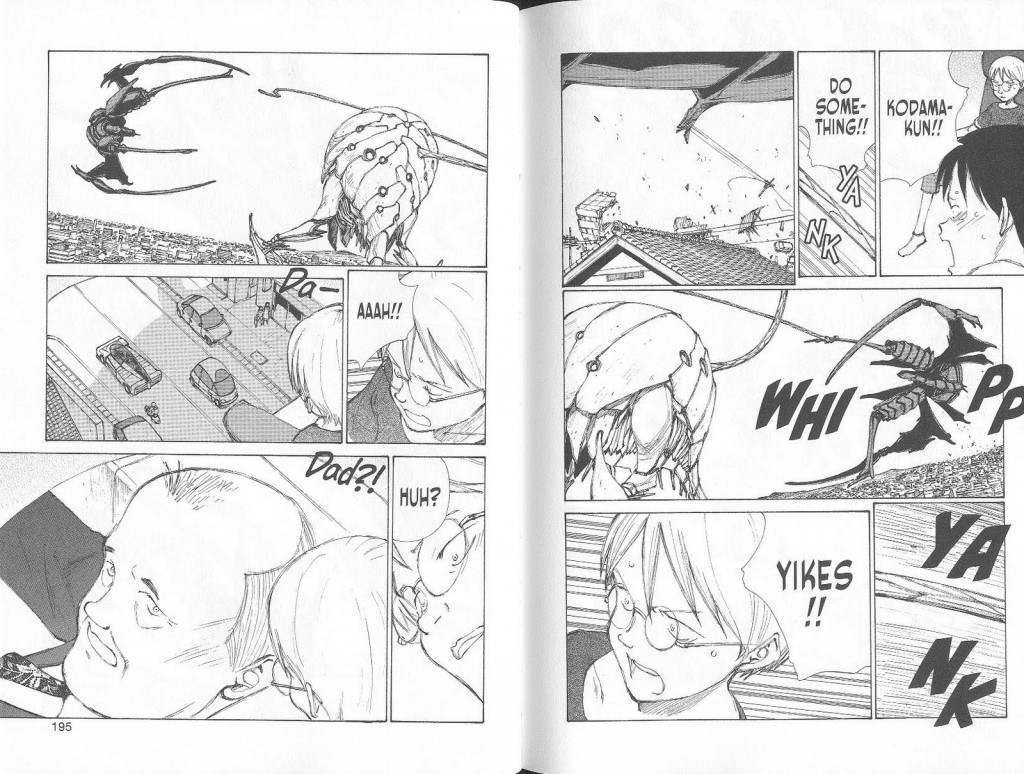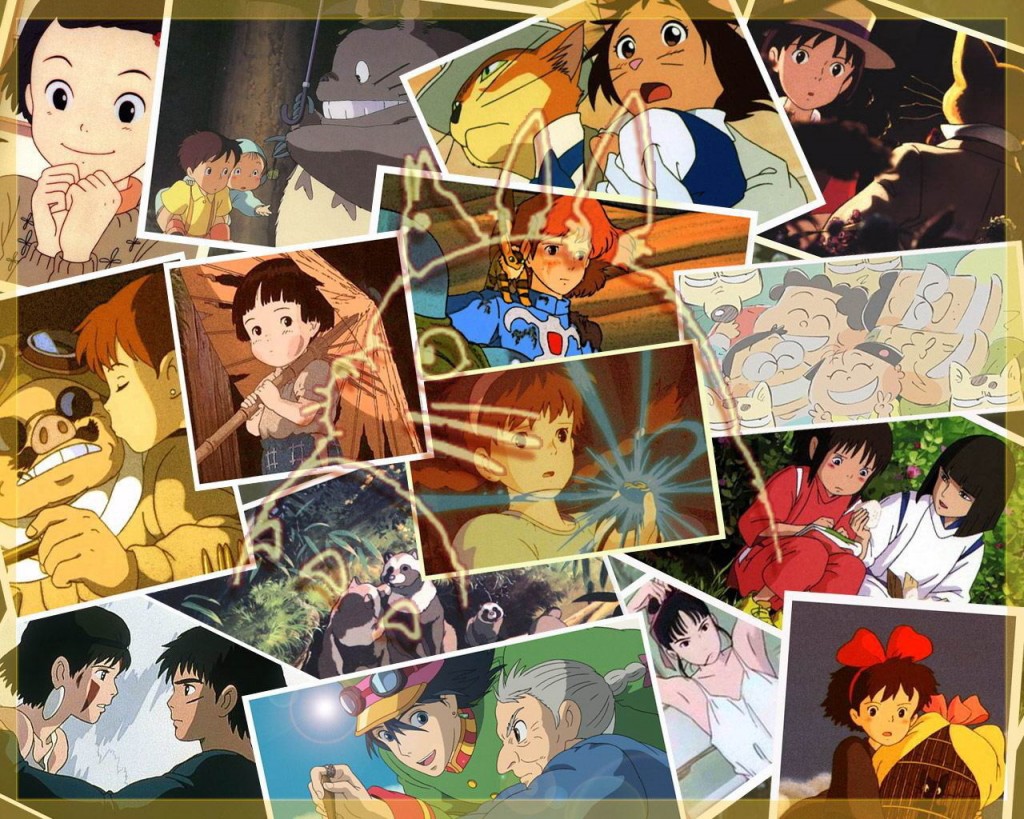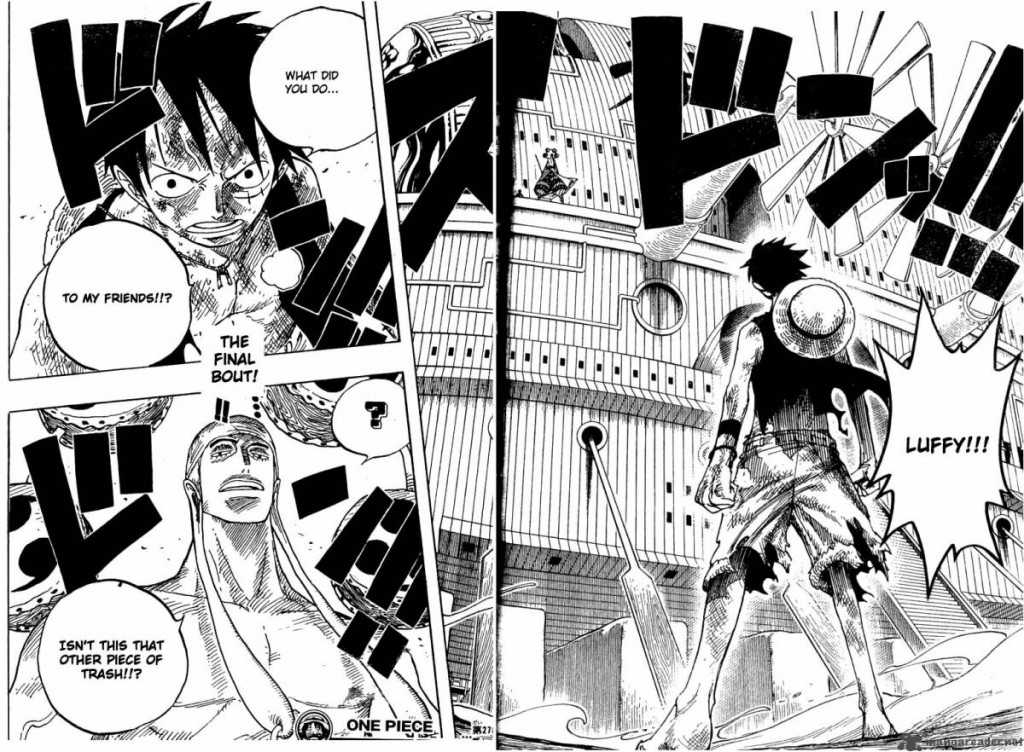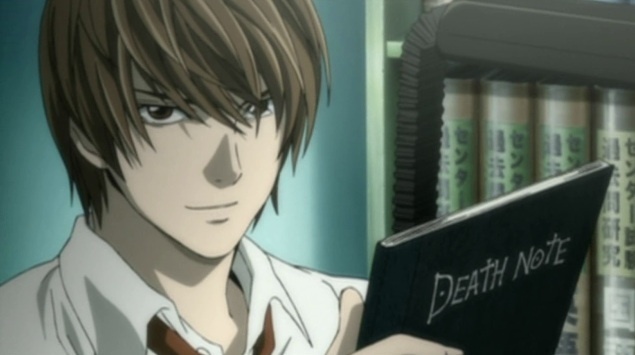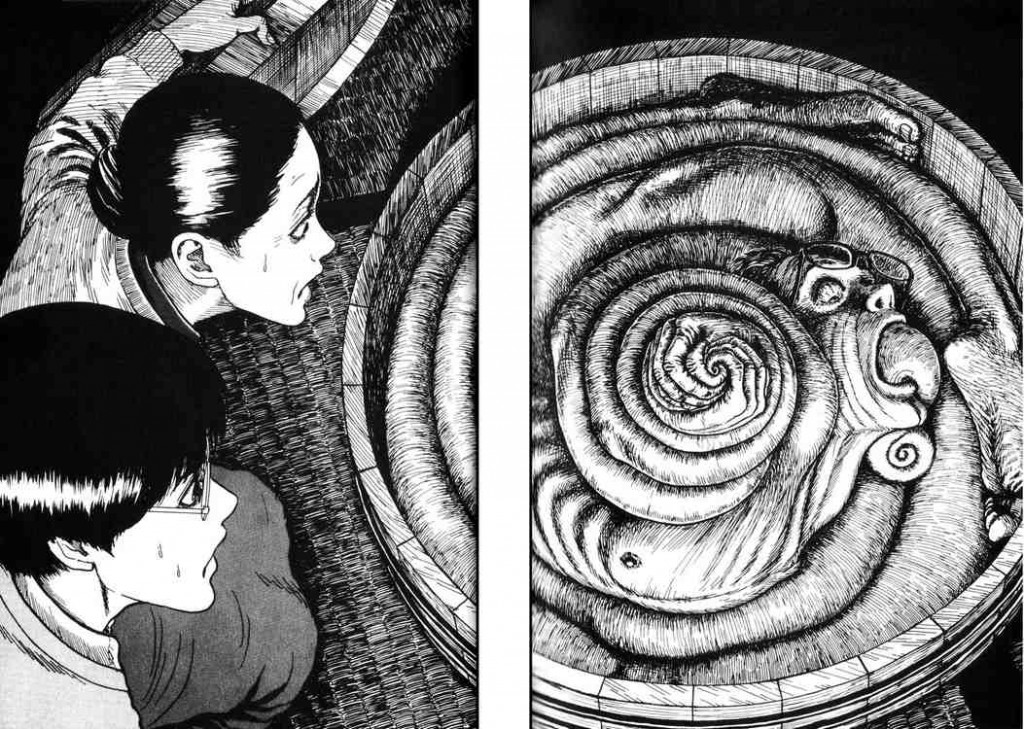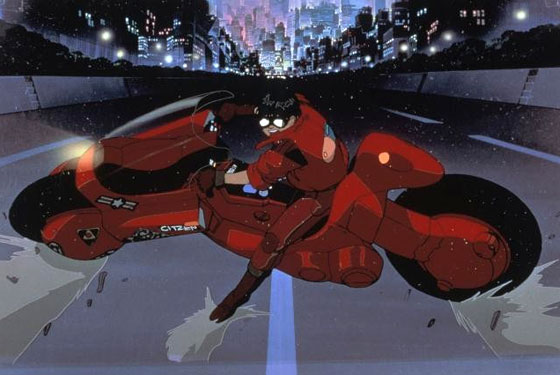‘Big eyes, big boobs’. This may be the response you get when ‘anime’ or ‘manga’ is mentioned to the uninitiated. Either that or a look of utter bewilderment. For Western audiences animation and comics have always been deemed far lesser formats than live-action and novels. When compared to our most popular producers like Disney and Marvel, Japanese studios like Funimation and Viz Media are even less recognised and respected. Still, with a considerable rise in comic shops and import websites over recent years, anime and manga has become increasingly accessible for British consumers. Never has it been a better time to join this wonderfully wacky world.
So what is it? Well ‘anime’ essentially refers to animation. This can be a film, short film or ‘OVA’ (original video animation), or a series of approximately 20 minute long episodes. ‘Manga’ on the other hand is the term for a Japanese comic. All Japanese text reads right-to-left rather than the Western method of left-to-right. As such manga is also read right-to-left on each page, starting from what we would typically call the ‘end’ of the book and working our way ‘backwards’.
Ultimately, nothing can beat real life or the written word. That said I have always been a defender of animation and illustration, as they can show a great deal that live-action and text cannot. Anime and manga can set a fantastical scene on a floating island or a space station with lower cost and perhaps greater detail than in a CGI-filled blockbuster film or a chapter in a novel. The way situations and objects are artistically portrayed can also present further ideas and deeper themes. In a terrifying situation characters may be shown with ‘dead eyes’ (the precise term eludes me) to show shock or in close-up with a magnifying ‘fish-eye lens’ effect to show paranoia.
As part of another culture and another language there are a variety of common tropes and terms one will encounter in anime and manga. Teenage protagonists; exaggerated physical traits such as crazy hair, large eyes, and *ahem* huge breasts; cute mascots; and a visual representation of emotions for comedic effect. This last one includes a teardrop for bewilderment, a red cross for anger, a nosebleed to represent arousal, or a character shrinking down for a ‘super-deformed’ effect to show panic and embarrassment. As a little bit of Japanese 101, suffix addresses such as ‘-san’, ‘-kun’, and ‘-senpai’ are often used as terms of address to enforce one’s relationship to another and as a mark of respect. An ‘otaku’ is an extreme geek, often parodied as a complete social misfit with an unhealthy obsession with computers, anime and manga.
When discovering new shows and comics, one should also take note of the amount of ‘fanservice’ it is supposed to contain. Essentially this can be any situation in which sexual material is the focus, ranging from a one-off gag in which a character accidentally grabs another inappropriately, to a full-blown shower or spa scene. For the open-minded fanservice is often laughed off being nothing but ridiculous, but the the easily-offended may prefer to stick to safer fields.
When seeking a new series or a one-off, newcomers should consider the types of stories they usually enjoy and the rating they’re comfortable with. As anime and manga are an integral part of Japanese culture, they cover every genre imaginable (yes even that one but let’s not go there). So whether you’d prefer a tale of giant robots waging war in the depths of space, a coming-of-age romantic comedy, or a grisly supernatural horror, you’ll be catered for here. Materials are also categorised by their targeted demographic, including ‘shonen’ (‘boy’), ‘shojo’ (‘little female’), ‘seinen’ (‘young men’), or ‘josei’ (‘ladies’). However these classifications are far from rigid as many shows and comics rated for younger audiences can still be dark and appeal to adult audiences. In particular, manga series housed under the ‘Shonen Jump’ magazine brand such as Bleach and Naruto are extremely popular with audiences of all ages. Seinen are typically associated with outwardly explicit series like Battle Royale and Gantz but may also encompass titles that simply carry an adult nature such as Bokkurano: Ours and Eden of the East.
Beyond all the guidance and induction one may be given to such a diverse and complex realm, the best way to accustom oneself to any unknown field is to just dive in. Whether streaming online or buying boxsets, reading wiki pages or trawling through review sources, finding the best material will always be the result of research, trial n error, passion, and patience. To finish off this short but hopefully effective beginner’s guide to anime and manga, I have listed below a selection of various series and films that I think make great starting points for greenhorns. Whilst this is not a definitive list by any means, I have chosen these titles in particular to showcase a variety of different genres, styles, and tropes common in the medium.
Some starting points:
Any Studio Ghibli film
Founded in 1985, Studio Ghibli has since garnered high critical and commercial success and seen the release of seventeen feature films, directly mostly by its co-founder Hayao Miyazaki. They are often regarded as the Walt Disney of Japanese animation, which is somewhat ironic considering Disney holds the rights to international publishing. From epic fantasy to slice-of-life drama Ghibli films are often beautiful, moving, and unforgettable, boasting an impressive English voice cast including Kirsten Dunst, Christian Bale, and Willem Defoe. Like Disney films Ghiblis are also generally a good introduction to anime for all the family.
Particular highlights include Spirited Away, My Neighbour Totoro, and Kiki’s Delivery Service, all of which perceive coming-of-age tales through a fantasy environment. Princess Mononoke and Tales From Earthsea on the other hand are certainly for an older crowd, appealing most of all to die hard fantasy fans. Finally, Grave of the Fireflies is by far and away Ghibli’s darkest tale but also one of their best, following two orphaned children as they struggle to survive during World War II. In short, as Ghibli films are at once familiar and spectacular, they make a brilliant first impression for newcomers and an enticing invitation to see more.
One Piece
As Japan’s best-selling manga series, One Piece arguably beats the other Shonen top-dogs, Bleach and Naruto, by heart alone. Instead of just being a super-cool testosterone-fuelled action series, Eiichiro Oda goes the extra mile with story, characters, and art. Sure at its core OP centers around superpowered pirates looking to find a legendary treasure, shouting out the names of their attacks, and reaching otherworldly levels of strength. Yet what has kept the series running for over 60 volumes since 1997 is the way it makes the reader truly care for the superbly well-written and well-drawn main cast. Alongside some ridiculous character designs and an over-the-top sense of humour, the series also carries a surprisingly dark and adult edge with it.
Themes of murder, crime, revenge, responsibility, justice, war, and slavery fuse with those of friendship and heroism to create a deep and complex world. As the original source material, the manga is purest presentation of the story and characters and is backed up by some of the best illustrated out art out there. The anime in comparison suffers early on from budget and pacing issues and, like many long-running series, frustrates many with anime-exclusive ‘filler’ episodes. As a compliment to the comics however the animation brings the busy world of One Piece to life with vibrant colour, a cheery soundtrack, and a superb voice cast for both the Japanese subtitled version and the English dub. Just be sure to catch the Funimation release and stay way clear of the infamously bad, heavily censored 4Kidz version. Unless you like the idea of bullets being replaced with bubbles. Not as funny as it sounds either.
Death Note
Anyone who reads this article and thinks anime and manga is all silly extremes should reconsider. For the ‘intellectual adults’ in the crowd here is the perfect series for you. If one thinks of a modern-day Sherlock Holmes story told from the perspective of a supernaturally-gifted killer then they would get Death Note. Brilliant but bored high-schooler Light Yagami discovers a notebook with an unusual ability. The person whose name is written within the book will die. Light vows to use the power for justice by punishing criminals everywhere and soon becomes known as Kira, god of the new world. No sooner does he gain this reputation is he then challenged by the world’s greatest detective, the mysterious ‘L’. The series continues to follow an intense battle of wits as the pair attempt to checkmate each other. Long-winded exposition isn’t uncommon in anime and manga.
Yet in Death Note it is not only essential for depicting the intellectual battle but it is also completely enthralling thanks to a brilliantly written script and incredibly artistic style. One episode of the anime is dedicated entirely to a conversation between Light and an FBI agent as her tries to gain the agent’s trust and ultimately her name. What should be a snooze-fest is instead one of the most gripping and delightfully clever sequences in any fictional media I have seen. Whilst I imagine the original manga is decent, I do highly recommend the anime version. Due to fantastic style and voice acting the anime is very artistic, almost on a literary level, being not only a supernatural thriller, but also a discussion of morality and humanity. Oh and it has a giant winged shinigami (god of death) who loves apples.
Uzumaki
To someone as desensitised as myself only Asian horror stands any chance of producing nightmares. That said art clearly has a much harder job of actually creeping us out more than just bombarding the screen and page with blood and brutality. Thankfully Junji Ito has us covered. Following the violent Tomie and before the grotesque Gyo came Ito’s manga series Uzumaki (‘spiral’). Harking back to classic horror collections, each chapter is a short story connected to an overarching event. In the small town of Kurozu-cho many strange incidents occur all relating to spirals. First people grow obsessed or afraid of them to extreme levels. Then bodies begin to morph and anything spiral-shaped grows antagonistic. Soon enough Kirie and her increasingly unstable boyfriend Shuichi are confronted by curly hair with a mind of its own, two young lovers curling around each other like snakes, and men turning into snails, just to name a few.
Throughout the three-volume series, many psychological themes are explored, including each of the seven sins. Without spoiling it, the final climax is a brilliantly chaotic tribute to HP Lovecraft as the spiral curse gradually completes itself. Whilst the characters may just be set pieces in a grander game, the fantastically bizarre art and simplicity of each story will ensure that Uzumaki stays with you for a long time.
Akira
Whether looking at the anime film or the more-detailed manga series, Akira is considered by many to be a very important piece of fiction. It is both a landmark for modern animation and comics, as well as an epic, heavily-influential sci-fi, being quoted as a strong influence for the likes of The Matrix among others. Bold and beautiful, violent yet intellectual, Katsuhiro Otomo’s morality tale covers everything from technology to humanity and religion. The anime has one of the best-directed openings of any film animated or not, as viewers are thrust into a bright and busy future Tokyo where murderous biker gangs rule the neon night. All set to an incredible soundtrack that sits somewhere between tribal music and a church choir.
Beyond all of its scientific debates, the story boils down to Tetsuo a member of a biker gang accidentally receiving god-like psychic powers. As Tetsuo grows more unstable, his friend Kaneda must stop him from wiping out the whole city. As pessimistic, harsh, and techno-babbly as Akira can get, this doesn’t come highly recommended enough to anyone with the slightest interest in anime and manga. And yes, this came way before Chronicle.
Hopefully you have found this guide and list informative and will spur you on to explore further. Arigato!


